
Sportscasting in Physical Education (Lee, 2011) is a class activity that students simulate sports broadcasting (e.g., students report, analyze, and comment on game play). It encourages problem solving (PS) learning for students. Scaffolding is the support with the intention of helping the student achieves his/her learning goals and contributes to problem solving. However, limited studies have examined if sportscasting with scaffolding is effective instructional strategies for PS. The purpose of this study was to examine effects of sportscasting with scaffolding on PS abilities, and on academic achievement. Participants were 46 college students. The static-group comparison design was used: an experiment group (N=26) with supportive scaffoldings (e.g., conceptual explanation, terminology dictionary, visual materials) and a control group (N=20) with reflective scaffoldings (e.g., organizing the environment, using appropriate cues to guide behaviors, and modeling). The results revealed that students in reflective scaffoldings had higher PS abilities than students in supportive scaffoldings. However, two groups were not statistically different in academic achievement. Sportscasting with instructional scaffolding promote a deeper level of cognitive skills and male students performed better than female students. The effective scaffolding types (Lewis, 2010) for sportscasting were discussed to help students to foster PS skills.

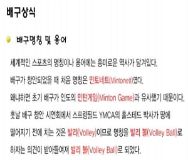
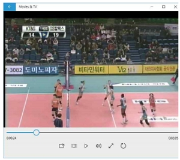
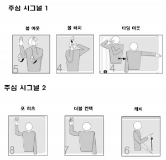
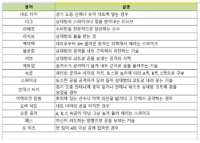
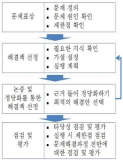
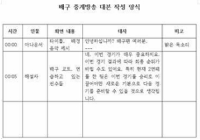
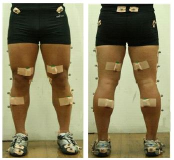
The purpose of this research is to investigate the factors affecting the performance capability of lunge movements by performing lunge movements which are commonly used as a method of instant physical movement in sports with a kinetic analysis including an EMG analysis. This research targeted 14 skilled fencers and made the subjects perform kick-lunges which allow them to go farthest from their positions and performed an analysis on such, applying a 3D motion analysis system and an EMG system. The subjects performed kick-lunges in two movements; one with a preliminary movement and the other without it and those are performed with both dominant leg and non-dominant leg. The result of this research is as follows. The lunges with a preliminary movement showed higher performance capability than those without it. Furthermore, as the level of skills gets higher, the length of lunges gets longer, and it seemed that a tactical mechanism shortening exercise performance times was used as a mechanism to control the impulse coming from such lengthened lunges. In addition, a difference appeared in mechanical factors such as moment and power in a dominant leg movement and it seemed to result from a difference in an functional capability using muscles.


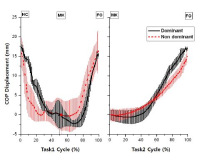


PURPOSE The purpose of this study was to investigate the current injury status and traits, including damage area, cause of damage based on the situation, and type of occurrence by age group for middle and high schools, university, and professional athletes, in record competition sports (swimming, track and field, and weightlifting). METHODS The study included 503 athletes enrolled in the Korean Sport & Olympic Committee in 2020, and an online survey was conducted using the R statistical program. RESULTS Approximately 38.4% athletes suffered injuries with weightlifting (0.81 times at university) and weightlifting (7.02 times at university) during training. The lower extremities were the most affected areas in all age groups (53.8% in middle school, 48.6% in high school, 44.4% in university, and 47.4% in professional). The causes of damage found to occur most frequently were ‘lack of physical strength, overuse or lack of rest, and recurrence’ and external factors, including ‘facility programs and weather problems.’ The results showed that internal factors during training were mostly associated with ‘overuse or lack of rest and excessive attempts at skills’, while external factors were found to occur in ‘weather problems’. According to the classification of each event, the top priority of frequent damage according to the damaged area was skin bleeding of the head in swimming and muscle inflammation in the torso and upper and lower extremities. Track and field resulted in muscle inflammation in the head, torso, and upper and lower extremities. Weightlifting caused damage to the head and torso, resulted in spinal diseases (disc, spinal stenosis, etc.), and muscle inflammation in the upper and lower extremities. CONCLUSIONS This study highlighted changes in the training environment and training environment, including level-specific physical training, reinforcement programs, scientific access to specific skills, sufficient rest and recovery, and continuous improvement of facilities and equipment.
PURPOSE Players’ nonverbal behavior during a game may be expressed through selfregulatory and intentional processes, where nonverbal cues are strategically used to achieve specific outcomes. This study aimed to observe and explore the strategic and intentional nonverbal behaviors utilized by table tennis players. METHODS The study utilized a grounded theory methodology and involved purposeful sampling of ten adult table tennis players. Semi-structured face-to-face interviews were conducted. The collected data were analyzed using open, axial, and selective coding techniques. RESULTS The findings revealed that players’ intentional nonverbal behaviors are influenced by their confidence levels, physical condition, and perceptions of others’ nonverbal cues. Throughout this process, players underwent various emotional experiences, worked to maintain a positive mental state, and experienced changes in both their behaviors and psychological states, which impacted the flow of the game. CONCLUSIONS This study’s results provide valuable insights into the role of intentional nonverbal behaviors utilized by athletes during competitions. This suggests that understanding and incorporating intentional nonverbal behavior should be a key consideration in sports psychology counseling and psychological skills training.
PURPOSE This study aimed to present the measures necessary to perform well in tennis clubs by examining the adaptation process of the MZ generation participating in tennis clubs. METHODS A qualitative case study was performed and data was collected through in-depth interviews, direct observations, and literature surveys. The data were analyzed by applying pattern matching among the analysis methods proposed by Yin (2014), and the reliability and validity of the study were demonstrated by consultations between colleagues, reviewing members, and comparing and analyzing previous studies. The study participants were seven MZ generation tennis club participants selected through snowball sampling (one of the non-probability samples). RESULTS Achieving a level of skill that allows for compatibility and the effort required for it, the acceptance of differences in club culture and between generations, having the etiquette necessary for Generation MZ, and falling for the charm of tennis itself were identified as factors for successful participation in tennis clubs. CONCLUSIONS This study is expected to help the MZ generation, who have recently been interested in tennis, continue their participation, as well as lay a small foundation for the expansion of the base of the sport by detailing the measures necessary to successfully participate in tennis clubs.
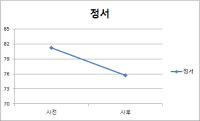
Purpose The purpose of this study was to examine the effects of positive psychological intervention program on mood state, self-esteem and happiness of university student athletes. Methods The participants were 10 university student athletes. The measures utilized the Profile of Mood States(POMS), self-esteem inventory and happiness questionnaire. Positive psychological intervention program was developed by previous studies, participants interview and expert discussion. The positive psychological intervention program were managing life, self-esteem enhancing program, being optimistic, positive emotion program, gratitude, forgiveness, communication skill training program, habit/routine making program and action strategy development. The data were analyzed by SPSS 20.0. Results These results were as followings. Firstly, positive psychological intervention program decreased total mood disturbance(TMD) of university student athlete. Secondly, positive psychological intervention program improved self-esteem of university student athletes. Lastly, positive psychological intervention program increased happiness level of university student athletes. Conclusion Training and education system should be established in which a positive psychological intervention program can be applied to university student athletes.

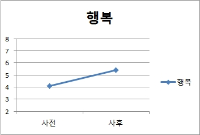


Purpose: This study was to verify the relationship between coaching behavior(autonomy/controlling behavior), self-regulation motivation and performance. Method: 356 athletes (from middle to work and professional team) in individual and team sport completed coaching behavior scale developed by this researchers assessing autonomy and controlling coaching behavior perceived by players, Korea Basic Pyshoclogical Needs Scale (KBPNS) assessing basic psychological needs, Behavioral Regulation in Sport Questionnaire (BRSQ) assessing sports motivation level based on self-determination theory, and sport performance score. To estimate the relationship between coaching behavior, self-regulation motivation and performance, this study employed the structure equation modeling analysis. Results: The relationship between psychological needs, regulation motivation and performance showed that autonomy coaching behavior tend to reinforce competence and autonomy of player. These variables have a positive effect on more inner regulation motivation. Moreover, the intrinsic motivation through stimulation experience was a key factor leading to a positive performance by improving the performance strategy and skill of athletes. Conclusion: These results are meaningful as an empirical evidence that relationship between motivation and performance can be changed according to the type of coaching behavior, and that autonomous coaching behavior play an important role in maximizing the performance of player that provided theoretically form.

PURPOSE This study aimed to analyze the difference between scores and loss of world-class fencing sabre players. METHODS A total of 78 match videos and 1969 points of international competition over 3 years were analyzed for the nine major competitors of the national fencing team (Males = 5, Females = 4). The characteristics of each skill, body section and location according to the score were analyzed by dividing them into male and female groups. Data were analyzed using IBM SPSS ver. 25.0. RESULTS First, in the situation analysis according to the men's sabre score, attack skills were the most common in the winning situation (447 points, 73%) and in the situation of losing points (389 points, 72%); however, the difference was not significant. In the analysis of the piste location according to the score, B4 was the most common appearing 254 times (41.5%) in the scoring situation and A4, 243 (45%) times in the losing situation, with a significant difference (p < 0.001). Second, in the situation analysis according to the women’s sabre score, 315 attacks (70.6%) were found in the winning situation and 277 (74.7%) in the losing situation; however, the difference was not significant. In the analysis of the scoring body part, the Sixte area scored the highest with 121 points (27.1%), and the arm area lost the most points with 105 points (28.3%); however, the difference was not significant. In the analysis of the piste location according to the score, A4 was the most common in, appearing 179 times (40.1%) in the scoring situation, and 182 times (48.8%) in the losing situation, with no significant difference at the p < 0.001 level. CONCLUSIONS In the men's game, there were many scored points in B4 and many lost points in A4. In the women's game, there were many scored points and lost points in A4; therefore, the difference in goals and losses according to the piste position was confirmed. These results suggest that it is possible to infer the game management patterns of world sabre players and the flow of world fencing.
PURPOSE The main purpose of this study was to examine the difference in visual search strategies based on the skill level in success and failure cases in badminton short serves. METHODS To this end, six badminton experts (experience: more than 10 years) and six novices (less than 1 years) participated. The participants’ eye movement was recorded during each trial, and mean fixation duration, mean saccade amplitude, percentage of viewing time on each fixation location, final fixation duration, and gaze entropy were analyzed. RESULTS First, the mean fixation duration did not differ significantly, but the mean saccade amplitude increased when expert players failed to perform the serve successfully. Second, the percentage of viewing time on each location results showed that the overall viewing time was lower when the performance was unsuccessful, and the expert players fixated longer time viewing the net and space when they made a successful serve. Third, expert players showed longer QE than novice players when they made a successful serve. Finally, the gaze entropy results showed that expert players showed greater gaze entropy during successful performance, indicating that the gaze pattern was randomly distributed across trials. CONCLUSIONS When learning a badminton serve, we should fully recognize and explore the receiver’s location and external environment, and subsequently, before initiating serve movement, focus on the net or space between the receiver’s racquet and shoulders to make a more successful performance. In addition, we should make various patterns of the visual search strategy, rather than the fixed or consistent search strategy, to deceive receivers.

This study has been conducted to develop methods and techniques for the analysis of data related to baseball performance using the winning and losing games. The purposes of the study were to examine differences of athlete performance for semi playoff, playoff, and Korean professional baseball series and to develop optimal forecasting model for the short term series. Data used in the study were taken from Korean professional baseball association. Three data sets including semi play off from 1982 to 2012, play off from 1989 to 2012, and Korean series from 1982 to 2012 were used. To compare athlete performance by winning and losing games for short-term series t-test was applied. This study created new parameters by weighted value through the equalization process to calculate skill related variables as a predicted variable. Three predicted models such as discriminant, binary logistic regression and artificial neural network models were developed to clarify the suggested models. The results showed that the number of significant parameters increased as the series continued. In particular, a variable related to error was added as a significant variable at the Korean Series. A third base hit in the play-off and a second base hit were also added as significant parameters in the play-off and the Korean series, respectively. In addition, W/L a major variables affecting a given technology area, the pitching PO, PO, the inertia, KS, the pitching, respectively. An artificial neural network model was finally selected with the highest accuracy and lowest input of estimated parameters in the semi play-off. In the play-off, artificial neural network model that applied technical area parameters by specialist criteria had better accuracy rate than two others. In the Korean series, artificial neural network model that created estimation parameters by applying all parameters was chosen as the final model. When the overall accuracy level of semi-play off, play off and Korean series was figured out, binary logistic regression model had higher accuracy of classification than discriminant model, but artificial neural network model had the higher accuracy of classification than binary logistic regression model.

